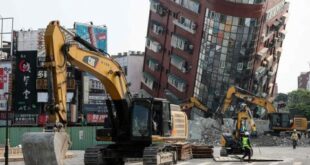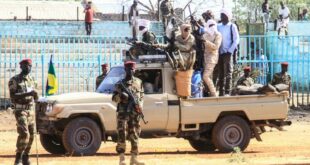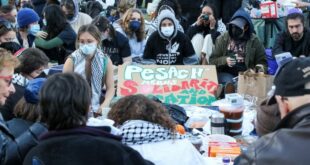Day after day, thousands more people in northern Gaza are scrambling to get to a place of greater safety as intense fighting rages there between Israel and Hamas.
These civilians are streaming out of the northern part of the territory, making the journey south whatever way they can — many on foot, travelling with family in tow.
Akram Al Sabbagh described undertaking a "very dangerous" hours-long walk to get to the southern part of the Gaza Strip.
The 73-year-old Canadian travelled to Gaza in September to visit his brother. He's already had to relocate several times as a result of the outbreak of the war.
There are clear dangers for people staying put in northern Gaza, but they also face risks in travelling south — not only during the journey itself, but also in finding shelter and staying out of harm's way once they get to their destination.
Adding to that, the greater the number of people who head south, the more acute the pressure is on authorities and aid agencies to provide enough food, water and other necessities for the growing number of civilians gathering there.
Ongoing danger
Conflict erupted in Gaza in the wake of a surprise cross-border attack Hamas launched across parts of southern Israel nearly five weeks ago.
In response, Israel declared war and has unleashed a campaign involving airstrikes and a ground offensive, with the goal of dismantling the Islamist militant group and its infrastructure.

The resulting death toll has been immense, with thousands of civilians killed and at least two-thirds of Gaza's 2.3 million people internally displaced within the besieged enclave.
As of Friday, officials from the Hamas-run Health Ministry in Gaza say more than 11,000 people have died in the territory since Oct. 7. In Israel, the Foreign Affairs Ministry revised the government's figure that some 1,400 people had been killed — Canadians among them — and now says the number stands at about 1,200. As well, some 240 people were taken hostage after the initial Hamas attack.
With Israeli forces pushing further into Gaza, the fighting does not seem likely to halt any time soon.

Daniel Byman, a senior fellow at the Washington-based Center for Strategic and International Studies, told CBC News Network that Hamas is "scattered" across the territory but "has a lot of fighters in the north" — including the Gaza City area, according to reports.
"Israel expects that the fighting back will get more fierce as its forces move forward," Byman said.
Daily pauses
On Friday, Israel said it had granted a six-hour window of time, which would allow civilians to escape northern Gaza along Salah al-Din — a key artery people have been moving along for days to exit the north.
It also agreed to the opening of a second route, after a deal announced by the White House a day earlier.

Israel agrees to 4-hour pauses in fighting in Gaza
1 day ago
Featured VideoWARNING: This story contains distressing images | Israel has agreed to daily four-hour 'tactical pauses' in Gaza to allow for civilian evacuations as U.S. officials say that Hamas figures might undercount the mounting number of deaths.
The White House said Israel agreed to implement a brief humanitarian pause each day.
Israel estimates that more than 850,000 of the 1.1 million people in northern Gaza have left, according to military spokesperson Jonathan Conricus. He called the pauses "quick humanitarian windows" that allow southward movement "while we are fighting."
However, Francesca Albanese, the United Nations special rapporteur on human rights in the Palestinian territories, called the pauses "cynical and cruel," saying it was just enough "to let people breathe and remember what is the sound of life without bombing before starting bombing them again."
Mixed emotions
On Friday alone, tens of thousands of new refugees from the north had reached the central city of Deir al-Balah.
With no fuel for vehicles, the crowds had walked for hours as explosions echoed a short distance away.

Among them were wounded and older people. They arrived hungry, exhausted and with a stew of emotions — relief, rage and despair.
Reem Asant, 50, described winding through the streets on the way out of Gaza City trying to avoid shelling.
For Canada's Al Sabbagh, his journey has brought him to the Egyptian border crossing at Rafah, where he and others with Canadian ties are still waiting for it to reopen.
His own proximity to the Rafah crossing left him with the hope that he will soon be able to leave the conflict behind.
Global Affairs Canada, however, said none of the Canadians on Friday's list of foreign nationals approved to leave the Gaza Strip were able to exit.
There were 266 Canadian citizens, permanent residents and their family members on the list who hoped to cross into Egypt.

*****
Credit belongs to : www.cbc.ca
 MaharlikaNews | Canada Leading Online Filipino Newspaper Portal The No. 1 most engaged information website for Filipino – Canadian in Canada. MaharlikaNews.com received almost a quarter a million visitors in 2020.
MaharlikaNews | Canada Leading Online Filipino Newspaper Portal The No. 1 most engaged information website for Filipino – Canadian in Canada. MaharlikaNews.com received almost a quarter a million visitors in 2020.







